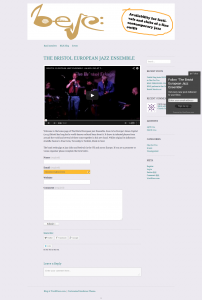Citizens’ Organising
[amazon_link asins=’0679721134′ template=’ProductAd’ store=’markettogether’ marketplace=’UK’ link_id=’4e0b520e-5dad-11e8-9735-af4bb1fcb2fa’] [amazon_link asins=’0679721126′ template=’ProductAd’ store=’markettogether’ marketplace=’UK’ link_id=’66f0ea4d-5dad-11e8-aad2-d12c714ba9fc’]Citizens’ Organising is an approach to community development from the United States and an effective mutual method. It can be traced back to the work of Saul Alinsky in the 1970s. His books “Rules for Radicals” and “Reveille for Radicals” are still worth reading. The Industrial Areas Foundation, who organise across cities in the United States, built upon his work after his death in the early 1970s.
Citizens’ Organising in the UK
Attempts to introduce organising to the UK from the early 1990s were not very successful. Whilst a few groups still struggle on it never really took root in the UK. However, organising is worth considering and it is possible to add elements into community development practice.
One essential element is power analysis. This means we need to understand who actually has power in a given situation. Sometimes it is important to name the powerful and target them for effective change.
Equally important is its understanding of activism and indeed, if we are to take activism seriously, then organising is essential to community development. Anger, seen as a positive emotion, powers activism. It is important no one person becomes essential to the organisation; power is held collectively, not concentrated in the hands of any one person. So, roles are held for no more than one year. This means everyone had opportunities to increase their experience of a range of roles, building a pool of capable people, enhancing the organisation’s capacity.
The emphasis is upon building relationships and applying pressure to key power-holders. Activists claim you have “no permanent friends and no permanent enemies”. The pressure applied to power-holders aims to bring them around to supporting the interests of the citizens’ organisation. If no-one within the organisation holds power, it is harder to buy out the organisation.
Learning More About Citizens’ Organising
[amazon_link asins=’1932805516′ template=’ProductAd’ store=’markettogether’ marketplace=’UK’ link_id=’5027fa6c-5dae-11e8-bed1-a7680b584912′]The Citizens’ Organising movement is reluctant to write text books, preferring to pass on their methods through training. They have a point but it is also important to understand what they offer and so a few helpful texts have emerged over the years. One I have found helpful is “Building a People of Power: Equipping Churches to Transform Their Communities” by Robert C Linthicum.Organising has traditionally involved churches because they are often the organisations that stay in neighbourhoods once everyone else has moved out. Their persistence means they guarantee income through paying their dues and so the organisation is able to plan ahead. Many other types of organisation can and do join citizens’ organisations, including other faith groups.
Have you used organising as a part of your development work or experienced a citizens’ organisation in your city? What have you found helpful about their approach?
